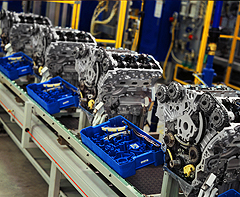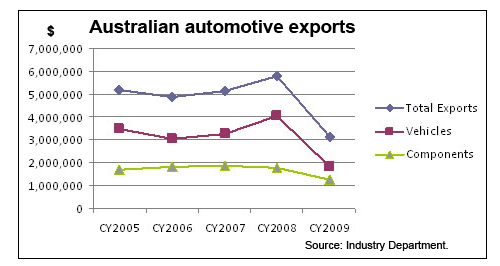Make / Model Search
News - General NewsAuto exporters look to respite from weaker dollarExport patrol: A lower Aussie dollar would aid exports, including Holden's Caprice Police Patrol Vehicle for the US. Miners’ pain could be auto exporters’ gain if new tax grounds high Aussie dollar4 May 2010 THE federal government’s controversial proposed resources super-profits tax might have a silver lining for hard-pressed Australian automotive exporters, courtesy of a weakened dollar. Equally, it might inflate the price of imported cars that have benefited not only from the strong dollar in recent years but, in the case of passenger cars, the five per cent tariff cut from January 1. The value of Australian-made cars and parts heading overseas has almost halved from a touch under $6 billion in 2008 to just $3.1 billion last year, mainly as a consequence of the economic downturn’s impact on Middle Eastern car sales and Holden’s ill-fated Pontiac G8 program to the United States. To make matters worse, the resources boom has helped to push the Australian dollar to more than 92 US cents, making it even more difficult for exporters to compete in foreign markets. Customers in Australia’s two biggest automotive export markets, the US and the Middle East, mostly deal in the greenback, but companies dealing in other currencies, such as the yen, won, yuan and euro, are similarly affected. Federal Chamber of Automotive Industries (FCAI) chief executive Andrew McKellar told GoAuto that the impact of the resources tax foreshadowed by the Rudd government in the wake of the Henry tax review might mean a depreciation of the Aussie dollar, helping to give some breathing space to Australian exporters.  “One of things that has been hurting local manufacturers within the auto industry more than anything has been the extent of the appreciation in the exchange rate which has been underpinned by the impact of the resources boom,” he said. “I think it is quite arguable that the exchange rate has over-appreciated, and that has undermined the competitiveness of a number of our export industries, including automotive exports. “So if one of the results of tax reforms in that area (resources) contributed to bringing the exchange rate back to more neutral levels, then I think we might see other, broader benefits in terms of future prospects for manufacturing exports, including our automotive industry.” Conceding that a weaker dollar could also make imported vehicles more expensive, Mr McKellar said the currency had probably swung too far and needed to be “rebalanced”. “The key is that the exchange rate be at a fairly priced level and not be out of kilter in terms of the competitiveness to various sectors across the economy,” he said. Exports of Australian-built cars – mainly from Holden and Toyota – soared to a record 162,929 in 2008 before the global financial crisis brought the numbers crashing down to 72,503 units in 2009. Automotive parts exports also plummeted as overseas customers ordered fewer bits. The exports were also impacted by the closure of Holden’s four-cylinder engine plant which exported 100 per cent of its production until shutting its doors last year. Holden is hoping to improve export performance from its Global V6 plant this year as demand returns in key markets, while car exports from its Elizabeth factory in South Australia are expected to recover only gradually, at least until Holden can bring its Caprice-based Chevrolet Police Pursuit Vehicle on stream in 2011. A lower Aussie dollar would help the competitiveness of that vehicle in the US, along with a proposal to widen exports to a public-released Chev Caprice. Exports to the Middle East would also benefit where high prices are killing the competitiveness of Australian-built GM Chevrolet Caprices and Luminas and Toyota Camrys.  |
Click to shareGeneral News articlesResearch General News Motor industry news |









Facebook Twitter Instagram